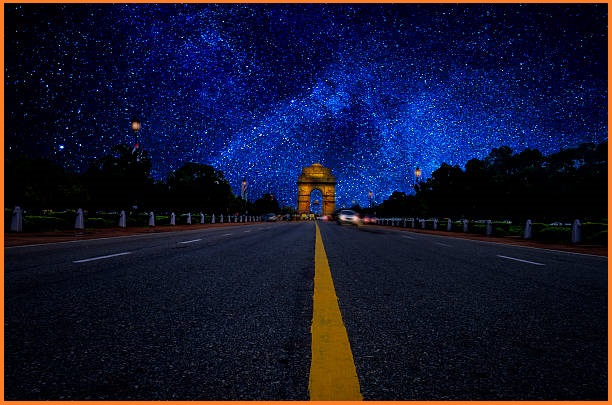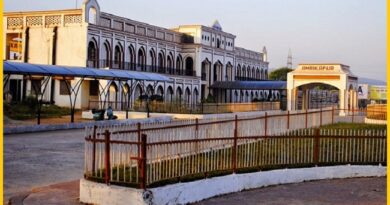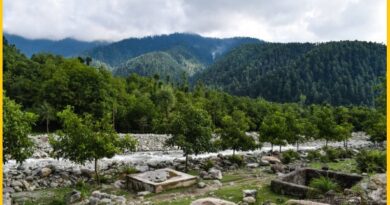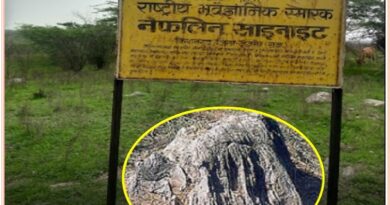India Gate- A Symbol of Sacrifice and National Unity
India Gate
India Gate is a prominent monument located in the heart of New Delhi, India. It is a war memorial that commemorates the Indian soldiers who died in World War I and the Afghan Wars. It is one of the most iconic landmarks in India and holds historical and cultural importance. India Gate is situated on the eastern end of the Rajpath, a ceremonial avenue in New Delhi. It stands as a focal point of the city and is surrounded by lush lawns and gardens, making it a popular destination for both locals and tourists.
Designed by Sir Edwin Lutyens, India Gate is inspired by the Arc de Triomphe in Paris. It stands at a height of 42 meters (138 feet) and is made of sandstone. The monument is an archway with an eternal flame burning beneath the arch, known as the Amar Jawan Jyoti (the Flame of the Immortal Soldier), which serves as a tribute to Indian soldiers.
Memorial Inscriptions- The walls of Indian Gate bear the names of more than 13,000 soldiers of the Indian Army who died in World War I, the Northwest Frontier operations, and the 1919 Afghan campaign.
India Gate Timings
India Gate in New Delhi is open to visitors 24 hours a day, 7 days a week. There are no specific opening or closing hours for the monument itself, as it is a public area that remains accessible at all times. However, if you plan to visit the Amar Jawan Jyoti, the memorial flame located beneath the arch of Indian Gate, it is lit continuously and can be visited at any time of the day or night.
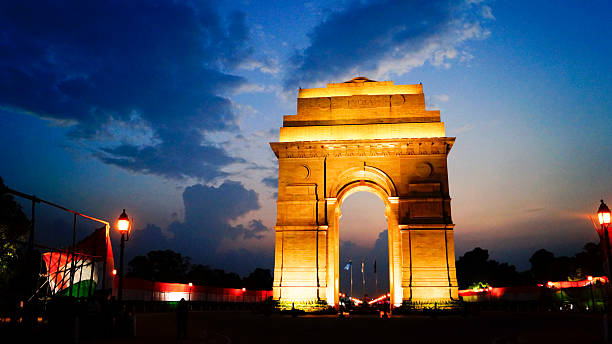
Keep in mind that while India Gate itself is open at all times, certain nearby facilities such as snack vendors or souvenir shops may have their own operating hours. Additionally, visiting during daylight hours may provide better visibility for appreciating the monument and its surroundings.
Also read- Qutub Minar-The Majestic Marvel and Delhi’s Iconic Landmark
India Gate History
India Gate, one of the most iconic landmarks in India, has a rich history that reflects the country’s heritage and commemorates the sacrifices made by Indian soldiers. India Gate was originally conceived as a memorial to commemorate the Indian soldiers who lost their lives fighting for the British Empire during World War I and the Third Anglo-Afghan War. The idea for the monument was proposed by the then Viceroy of India, Lord Hardinge, in 1919. The foundation stone of the gate then called the All India War Memorial, was laid on 10 February 1921, by the visiting Duke of Connaught in a ceremony.
Design and Construction- The design of Gate was created by Sir Edwin Lutyens, a renowned British architect, who also played a key role in designing the layout of New Delhi. The foundation stone of India Gate was laid in 1921, and construction was completed in 1931. The monument is constructed using sandstone and stands at a height of 42 meters (138 feet).
Inauguration: Indian Gate was officially inaugurated on February 12, 1931, by the Duke of Connaught, who was then serving as the Governor-General of India. The inauguration ceremony was attended by dignitaries and officials, including representatives from the British government and Indian leaders.
Memorial Inscriptions- The walls of India Gate bear the names of more than 13,000 soldiers of the Indian Army who died in World War I, the Northwest Frontier operations, and the 1919 Afghan campaign. The names are inscribed on the walls of the monument as a tribute to their sacrifice.
Symbolism: The India Gate serves as a symbol of valor, sacrifice, and national pride. It stands as a reminder of the courage and bravery of Indian soldiers who fought for their country and the values of freedom and democracy.
Amar Jawan Jyoti
Amar Jawan Jyoti, which translates to the “Flame of the Immortal Soldier” in English, is a memorial located beneath the arch of India Gate in New Delhi, India. Amar Jawan Jyoti is situated beneath the arch of Indian Gate, a prominent war memorial in the heart of New Delhi. India Gate itself commemorates the soldiers of the Indian Army who died in World War I and the Third Anglo-Afghan War.
Amar Jawan Jyoti consists of an eternal flame that burns continuously as a symbol of remembrance and reverence for the brave soldiers who laid down their lives for the nation. The flame is kept alight at all times, day and night, to honor the sacrifices of the soldiers. The flame of Amar Jawan Jyoti was lit on January 26, 1972, on the occasion of Republic Day in India. It was inaugurated by the then Prime Minister of India, Mrs. Indira Gandhi, as a tribute to the soldiers who lost their lives during the Indo-Pakistani War of 1971.

India Gate Nearest Metro
The nearest metro station to India Gate in New Delhi, India, is the “Central Secretariat” metro station. This station serves as an interchange between the Yellow Line and the Violet Line of the Delhi Metro. Visitors can take the Yellow Line (Line 2) and get off at the Central Secretariat station. From there, they can either walk or take a short ride via taxi or auto-rickshaw to reach Indian Gate. The monument is located at a short distance from the Central Secretariat metro station, making it easily accessible for tourists and locals alike.
Once at the Central Secretariat station, travelers can follow directions or ask for assistance to reach Indian Gate, which is a prominent landmark in the heart of New Delhi.
Places to visit near India Gate
India Gate is located in the heart of New Delhi, and there are several other attractions and places of interest nearby. Here are some places to visit near indian Gate:
Rashtrapati Bhavan
The official residence of the President of India, Rashtrapati Bhavan, is located just a short distance away from India Gate. Visitors can take guided tours of this grand colonial-era building and its beautiful Mughal Gardens (open to the public during certain times of the year).
Rajpath
Rajpath is a ceremonial boulevard that stretches from Indian Gate to Rashtrapati Bhavan. It is a prominent landmark and often hosts important events and parades, including the Republic Day Parade.
National Museum
Situated on Janpath Road, near India Gate, the National Museum is one of the largest museums in India. It houses an extensive collection of artifacts, artworks, and exhibits representing India’s rich cultural heritage and history.
Parliament House
The Parliament House, or Sansad Bhavan, is located near the Gate and Rashtrapati Bhavan. It is the seat of the Parliament of India and an architectural marvel designed by Sir Edwin Lutyens.

Jantar Mantar
Jantar Mantar is an astronomical observatory located in Connaught Place, not far from India Gate. It consists of several architectural instruments used for astronomical observations and calculations.
Gurudwara Bangla Sahib
This Sikh house of worship is a prominent religious site near India Gate. It features a beautiful golden dome and a serene atmosphere. Visitors can also partake in the community kitchen (langar) serving free meals to all.
National Gallery of Modern Art (NGMA)
NGMA, located on Jaipur House near India Gate, is dedicated to showcasing modern and contemporary art from India and around the world. It features a diverse collection of paintings, sculptures, and other artworks.
These are just a few of the many attractions near Indian Gate in New Delhi. Visitors to the area can explore the rich history, culture, and architecture of India’s capital city.
How to Reach India Gate
The nearest metro station to India Gate is the “Central Secretariat” metro station. From the Central Secretariat, you can either walk or take a short ride via taxi or auto-rickshaw to reach the Gate.Delhi has an extensive network of public buses operated by Delhi Transport Corporation (DTC) and other private operators. Several bus routes pass near India Gate, making it convenient to reach the monument by bus. You can check the route maps and schedules on the official website of the Delhi Integrated Multi-Modal Transit System (DIMTS).
You can reach India Gate by car or taxi from various parts of Delhi. The monument is located near Connaught Place, India’s central business district, and is easily accessible from different parts of the city. Auto-rickshaws are a popular mode of transportation in Delhi and can be found throughout the city. You can hire an auto-rickshaw to take you to Indian Gate from nearby locations.
